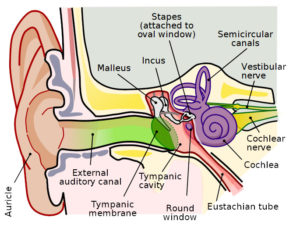- Series:Humans, Transcript English
Luke 11:28
“But he said, Yea rather, blessed [are] they that hear the word of God, and keep it.”
Our senses link us to the world around us and enable us to interact with the world. While most people believe that our sense of sight is the highest of the senses and the most marvelous in design, our sense of hearing is no less marvelous.
 When a sound strikes your ear, your eardrum vibrates with the sound waves, fast or slow, soft or hard. These variations in vibration provide us with important information about the nature of the sound we are hearing. Some sounds produce a vibration in the eardrum as small as a billionth of a centimeter – only one-tenth the diameter of a hydrogen atom! There are three tiny bones in the middle ear called the hammer, anvil and stirrup. They pick up the vibrations from the eardrum, amplify them and send them on to the cochlea. The cochlea is filled with about 25,000 tiny hair cells that finally turn the vibrations into electrical signals that are sent on to the brain.
When a sound strikes your ear, your eardrum vibrates with the sound waves, fast or slow, soft or hard. These variations in vibration provide us with important information about the nature of the sound we are hearing. Some sounds produce a vibration in the eardrum as small as a billionth of a centimeter – only one-tenth the diameter of a hydrogen atom! There are three tiny bones in the middle ear called the hammer, anvil and stirrup. They pick up the vibrations from the eardrum, amplify them and send them on to the cochlea. The cochlea is filled with about 25,000 tiny hair cells that finally turn the vibrations into electrical signals that are sent on to the brain.
Our hearing is designed to be more sensitive to high-pitched sounds than to lower sounds. If we had just a little more sensitivity to lower-pitched sounds, we would continuously be distracted by the internal sounds of our body, including the blood rushing through our arteries. In fact, to help prevent this, there are no blood vessels at all in that part of the ear where vibrations are turned into electrical impulses. The body supports life in these tissues by constantly bathing them in dissolved nutrients.
While we can hear many things, and decide not to hear other things, the Creator who so marvelously designed our ears invites us to hear His Word to us from the Bible.
Prayer:
Father, I thank You for Your Word, which tells me of Your love for me in Jesus Christ and Your will for my life. Forgive me for those times I have chosen not to hear Your Word, and let me be more eager to hear it in the future. Amen.
Notes:
McCutcheon, Marc. 1989. The Compass in Your Nose . . . . Los Angeles: Jeremy P. Tarcher, Inc. p. 90. Image: Anatomy of the Human Ear by Lars Chittka; Axel Brockmann CCA 2.5
